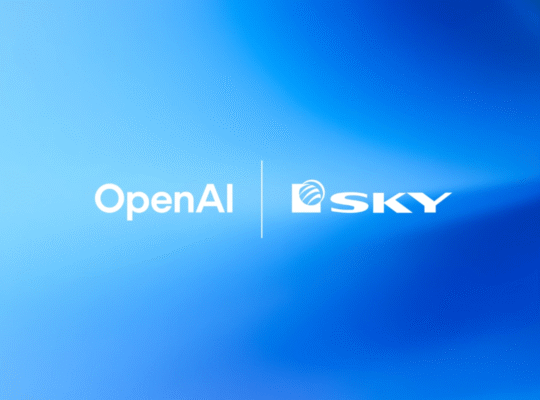You know Jony Ive — the man who helped design the iPhone, the iMac, and basically shaped how the modern world looks at tech. After leaving Apple, he’s been quietly working on something new with OpenAI, and from what we’re hearing, things aren’t going as smoothly as planned.
According to a Financial Times report, Ive and OpenAI are building a screenless, palm-sized AI device — something that doesn’t just sit on your desk or in your pocket, but blends into your daily life. Imagine an assistant that listens, sees, and responds naturally, without needing a screen. That’s the dream.
But here’s where the story gets tricky. OpenAI, for all its hype and success with ChatGPT, doesn’t have the same massive computing infrastructure as Google or Amazon. Running a personal, real-time AI device for millions of users would require insane amounts of computing power — far beyond what’s available today.
Maybe that’s why OpenAI just announced a multi-billion-dollar partnership with AMD to build new data centres. CEO Sam Altman even posted on X, saying, “The world needs much more compute.” Translation: if we want AI everywhere, we’ll need way more horsepower to make it happen.
But tech limitations aren’t the only challenge. The team is reportedly struggling with something deeply human — how the AI behaves. Apparently, the device doesn’t quite know when to stop talking (relatable, right?). It can also come off as too agreeable — a bit of a “yes-man” problem that OpenAI has been trying to fix for a while.
The goal of this new OpenAI project
The goal is to make the AI helpful, not overbearing. Ive’s design style has always been about elegance and restraint — so you can imagine how frustrating it must be to see a device that doesn’t know when to stop responding.
OpenAI didn’t comment on the project, which isn’t surprising considering how secretive both Ive and Altman can be. But if they pull it off, this could be something completely new — a piece of technology that feels alive, yet invisible.
This whole push reminds me of last year’s wave of “AI gadgets.” Remember the Rabbit R1 and the Humane AI Pin? Both promised to take AI off your phone and into the real world — but neither really clicked. Rabbit has since pushed a big update, trying to recover from a rocky start.

What is happening to Meta?
Meanwhile, Meta is quietly winning the AI hardware race with its Ray-Ban smart glasses. They look cool, they actually work, and sales have apparently tripled this year.
And it’s no small market either — research firm Grand View Research says the wearable AI space could hit $165 billion by 2030. That’s huge.
OpenAI’s collaboration with Ive became official earlier this year when it acquired his design firm, LoveFrom (io), for $6.5 billion. Now, the two creative forces are trying to build something that might redefine what it means to “use” AI — not on a screen, but as something that just exists around you.
If they can solve these early snags, we might be looking at the start of a new era — one where technology doesn’t demand your attention but quietly works in the background, helping you live a little smarter.
Read more: Perplexity CEO Says New AI Browser ‘Comet’ Could Reduce the Need for Additional Hires





















